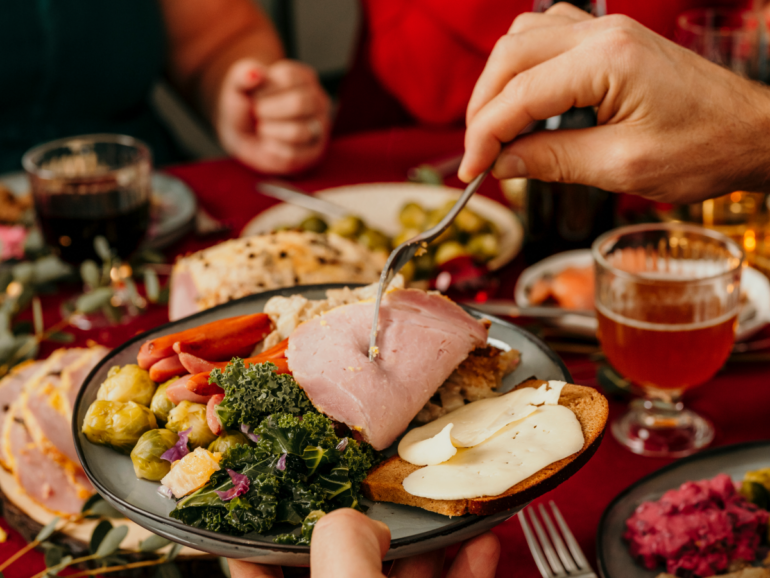Previous research has determined that both portion size and variety increase food consumption independently, but researchers from Penn State’s Department of Nutritional Sciences have found that these properties also work together to increase consumption for both single- and multi-course meals.
The study, recently published in the international journal Appetite, investigated how portion size and variety combine to influence food intake and if this relationship is influenced when meals are served in single or multiple courses.
Barbara Rolls, professor and Helen A. Guthrie Chair of Nutritional Sciences, explained that while portion size and variety have been researched individually, little is known about how they work together to impact food intake.
“One novel aspect about this study is that we tested the effects of offering a variety of food in small and large portions when served together, as in a buffet or over multiple courses,” Rolls said. “When we eat in a natural setting, many factors are changing simultaneously. While we have seen effects of portion size and variety separately, we wanted to see how they work together to affect consumption in situations similar to real-life experiences.”
Researchers prepared three savory casseroles composed of a grain, protein, vegetable and sauce of the same caloric density and that were finely chopped to a similar texture.
“Both calorie density and texture can influence consumption, so by making these meal properties similar, we reduced their potential effects,” said Paige Cunningham, postdoctoral scholar in nutritional sciences at Penn State and lead author of the study. “Doing so allowed us to be more confident that the differences in food intake were due to our manipulations of portion size and variety.”
Participants included females between the ages of 20 and 65. For each experiment, participants were served water and a total of three bowls of food. The first experiment served the casseroles in a single course and the second experiment served participants the casseroles over three sequential courses. Researchers modified the variety of food offered to participants and the portion size of the meals in each experiment.
The high-variety meals consisted of one bowl of each savory casserole and low-variety meals contained three bowls of the casserole participants identified earlier as their favorite in pre-experiment screenings. The large-portion meals served 33% more food than the small-portion meals.
“When serving various foods in a single course, one could imagine that the effect of variety would be stronger due to seeing all of the different food options at once, compared to when foods are divided over multiple courses,” Cunningham said. “We were surprised to find that the effects of variety were similar in both meal structures.”
Researchers found that, compared to meals when only one casserole was served in a small portion, participants consumed 27% more when served a variety of casseroles in large portions.
“A lot of meals in our environment, such as those served at restaurants or buffets or even family dinners around the holidays, consist of a wide variety of foods served in large portions,” Cunningham said. “Our study shows that portion size and variety add together, leading to excess food intake.”
The study continued research from Penn State’s Laboratory for the Study of Human Ingestive Behavior to investigate how portion size and variety of food impact human eating behavior. Researchers in the lab will continue to examine how these and other food properties interact with one another to influence food consumption.
“Our lab is also interested in how the caloric density of food interacts with these factors, so bringing in that component in future studies will allow us to see how it impacts the effects of portion size and food variety and determine what is driving food intake at meals,” Cunningham said.
When it comes to portion size and variety, the researchers recommend being mindful of these properties to help reduce the risk of overconsumption and obesity.
“At meals that consist of a variety of foods in large portions, it’s important to consider how these properties can contribute to overeating,” Cunningham said. “When deciding what to eat at these types of meals, prioritizing nutrient-rich foods that have a lower caloric density can help prevent overeating and lower the possibility of developing obesity.”
More information:
Paige M. Cunningham et al, Variety and portion size combine to increase food intake at single-course and multi-course meals, Appetite (2023). DOI: 10.1016/j.appet.2023.107089
Provided by
Pennsylvania State University
Citation:
Portion size and variety increase food intake at single- and multi-course meals (2023, December 19)



